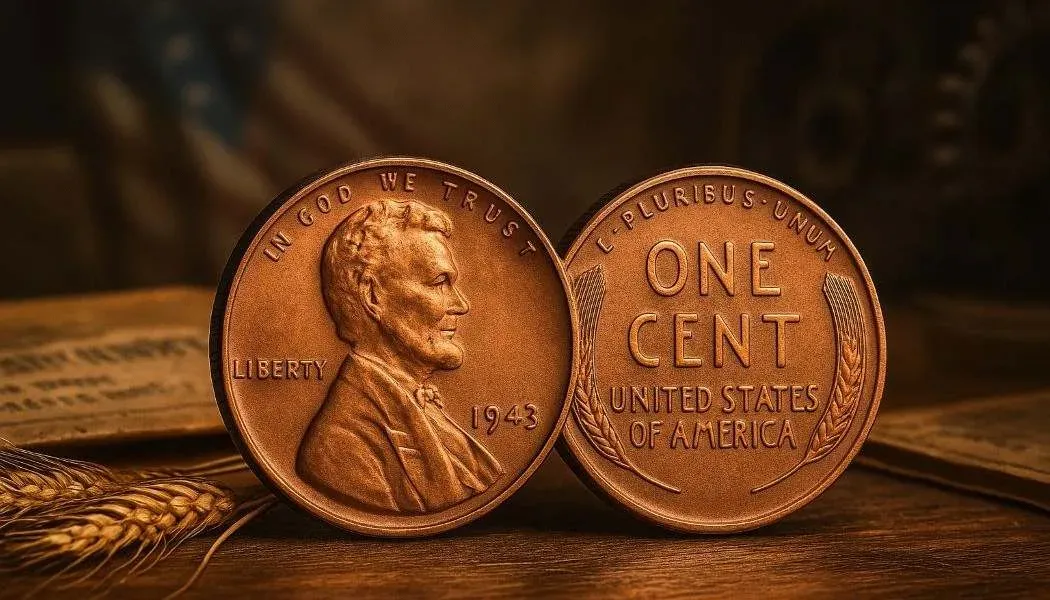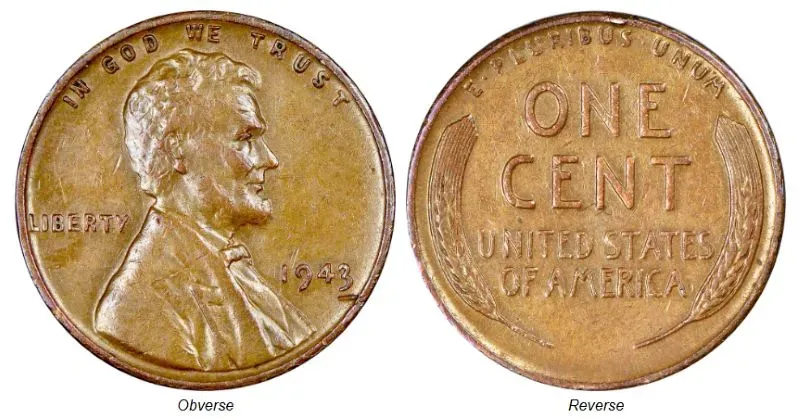1943 Copper Wheat Penny: The Legendary Lincoln Error Coin

Why the 1943 Copper Penny Still Amazes Collectors
Among U.S. coins, few have captured the public imagination like the 1943 Copper Lincoln Wheat Cent. Known as the “King of Mint Errors,” it owes its fame to a rare blend of history, scarcity, and record-setting prices. Minted accidentally in bronze rather than the zinc-coated steel used during World War II, it stands as a tangible reminder of how small oversights can create great rarities. With verified examples trading from six figures to well above a million dollars, this coin continues to fascinate numismatists, investors, and casual hobbyists alike. This guide explores its wartime origins, enduring design, technical details, value milestones, and tips for authentication and collecting.
Wartime Origins of an Accidental Rarity
The Lincoln Wheat Cent premiered in 1909 to commemorate the centennial of Abraham Lincoln’s birth, replacing the Indian Head Cent. By 1943, global conflict demanded copper for ammunition and communication equipment, prompting the U.S. Mint to adopt zinc-plated steel for one-cent coins. Yet a few leftover bronze planchets from 1942 mistakenly fed into presses at the Philadelphia, Denver, and San Francisco facilities. Struck with the normal Lincoln design but in the wrong metal, these pieces became the now-legendary 1943 Copper Cents — a striking artifact of America’s wartime economy and minting history.
Design and Symbolism
Victor David Brenner’s enduring artwork gives the coin its charm and patriotic resonance:
🔹 Obverse: A right-facing bust of Abraham Lincoln, encircled by IN GOD WE TRUST, LIBERTY, and the date. Brenner’s initials “V.D.B.” rest on the truncation of the bust.
🔹 Reverse: Two stylized wheat stalks cradle the words ONE CENT and UNITED STATES OF AMERICA, topped by E PLURIBUS UNUM. The wheat ears reflect abundance and agricultural strength.
🔹 Designer Legacy: Brenner’s portrait continues to grace the modern Shield Lincoln cent, making the 1943 copper issue part of a design lineage spanning more than a century.
1943 Copper Lincoln Wheat Penny
Specifications & Mintages
Key technical data underline how this issue differs from ordinary steel cents:
🔹 Composition: 95% copper, 5% tin and zinc (bronze).
🔹 Weight: ~3.11 g (heavier than the 2.7 g steel cent).
🔹 Diameter: 19 mm; plain edge.
🔹 Mints: Philadelphia (no mintmark), Denver (D), San Francisco (S).
🔹 Known Survivors: Fewer than 15 across all mints — making it one of the rarest U.S. coins ever documented.
Value Benchmarks & Auction Records
Market performance has cemented this coin’s reputation as an elite collectible:
🔹 Typical Range: Authenticated examples fetch $150,000–$500,000, even with moderate wear.
🔹 Top Grades: Mint State coins routinely exceed $1 million at major auctions.
🔹 Record Sale: A 1943-D bronze cent reportedly brought $1.7 million, while prime Philadelphia pieces have also surpassed seven figures.
🔹 Drivers: Condition, mintmark, and provenance heavily influence final prices.
Key Varieties & Rarity Insights
🔹 Philadelphia: Produces most of the known population, though still exceedingly scarce.
🔹 Denver (1943-D): Only one confirmed specimen exists, ranking among the most valuable small coins globally.
🔹 San Francisco (1943-S): Just a few verified pieces; highly coveted by advanced collectors.
🔹 Counterfeits: Many “copper 1943” cents are plated steel or altered 1948 coins. Certification from PCGS or NGC is vital.
Identifying a Genuine 1943 Copper Cent
Because of its worth and notoriety, this issue is heavily counterfeited. Collectors should:
🔹 Use a Magnet: Copper examples will not cling to a magnet, unlike steel cents.
🔹 Check the Weight: An authentic bronze piece weighs about 3.11 g; steel versions weigh 2.70 g.
🔹 Seek Professional Grading: Submitting to PCGS or NGC ensures authenticity, assigns grade, and protects market value.
Collector & Investor Appeal
The 1943 Copper Lincoln Cent resonates across the numismatic spectrum:
🔹 Extreme Rarity: With fewer than fifteen pieces certified, it stands beside the 1804 Dollar and 1913 Liberty Nickel as an icon.
🔹 Value Potential: Million-dollar sales confirm its blue-chip status among historic rarities.
🔹 Historical Resonance: A link to both Lincoln’s legacy and WWII resource conservation.
🔹 Error Enthusiasts’ Gem: A centerpiece for anyone building a U.S. error-coin portfolio.
🔹 Cultural Cachet: Its fame inspires headlines and drives interest far beyond traditional cent collecting.
Stories & Lore
From a 1947 schoolboy discovery to decades of media buzz, the 1943 copper cent has inspired myths and treasure hunts. Generations have searched their pocket change hoping to uncover a fortune — a testament to the romance and excitement surrounding numismatics.
Today’s Perspective & Collecting Tips
While ownership is out of reach for most, the 1943 copper cent continues to elevate interest in Lincoln cents overall. Collectors can:
🔹 Assemble complete Wheat Cent runs, including 1943 steel issues and post-1959 Memorial or Shield reverses.
🔹 Explore certified mint errors or commemorative copper rounds echoing its fame.
🔹 Protect any copper cents in inert holders to prevent corrosion and preserve luster.
🔹 Consider professional vaulting service for rare and valuable numismatic pieces.
Its story proves that even the humblest denominations can achieve legendary significance.
Closing Reflection
The 1943 Copper Lincoln Wheat Cent remains a benchmark of rarity, history, and market excitement. Its rise from minting accident to million-dollar treasure shows how narrative and scarcity can transform a one-cent coin into a cultural icon. Whether you’re studying error coins, building a Lincoln collection, or simply drawn to remarkable stories about U.S. Mint coinage, this piece continues to inspire — a timeless reminder that numismatics blends art, history, and opportunity.
Image source: NGC Coin Explorer
Another article that may interest you:
Buffalo Nickels (1913–1938): A True Icon of American Coinage
